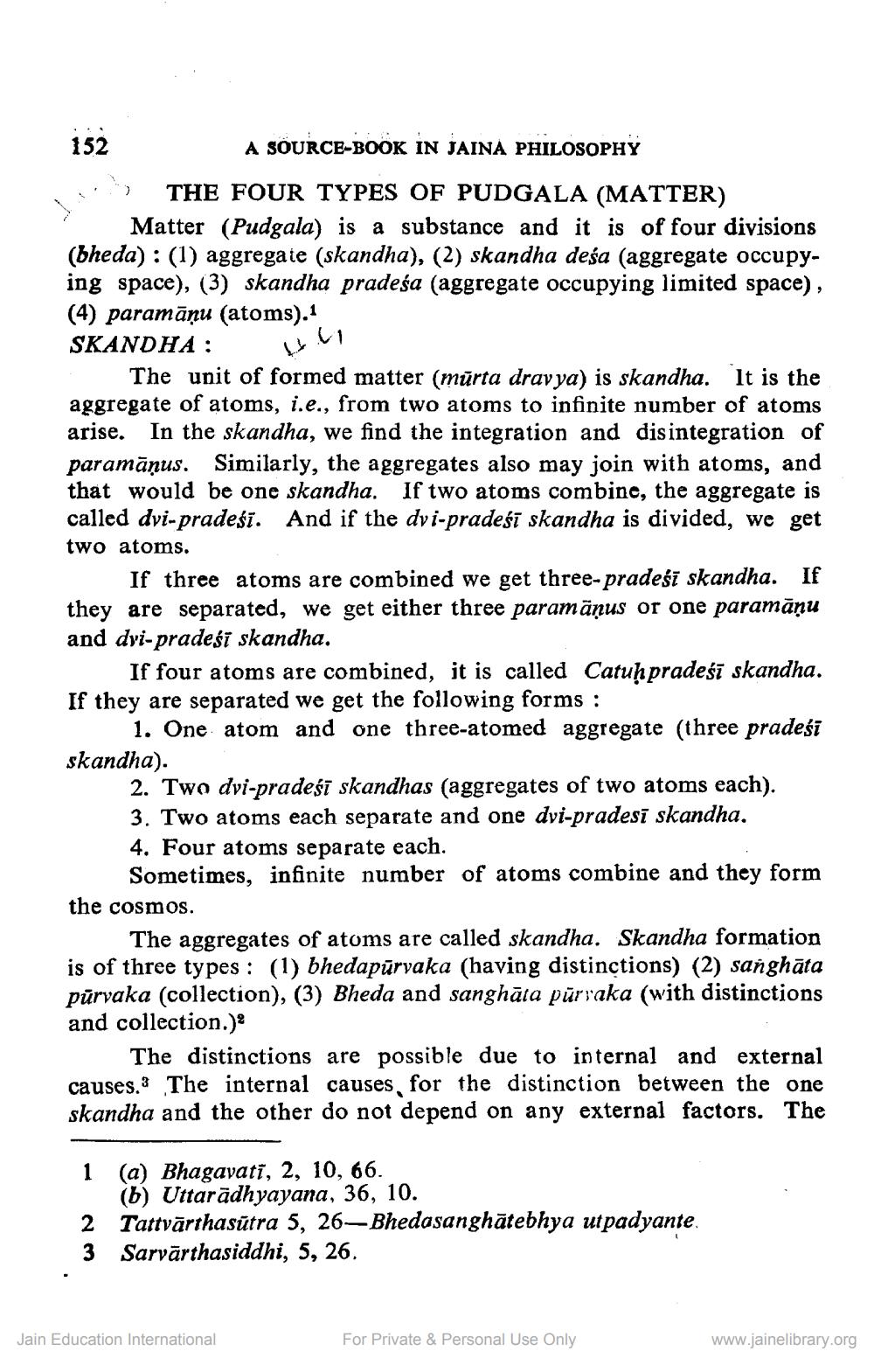________________
I
152
A SOURCE-BOOK IN JAINA PHILOSOPHY S THE FOUR TYPES OF PUDGALA (MATTER)
Matter (Pudgala) is a substance and it is of four divisions (bheda) : (1) aggregate (skandha), (2) skandha deśa (aggregate occupying space), (3) skandha pradeśa (aggregate occupying limited space), (4) paramāņu (atoms).1 SKANDHA: y V1
The unit of formed matter (murta dravya) is skandha. It is the aggregate of atoms, i.e., from two atoms to infinite number of atoms arise. In the skandha, we find the integration and disintegration of paramānus. Similarly, the aggregates also may join with atoms, and that would be one skandha. If two atoms combine, the aggregate is called dvi-pradesī. And if the dvi-pradeśī skandha is divided, we get two atoms.
If three atoms are combined we get three-pradeśī skandha. If they are separated, we get either three paramāņus or one paramāņu and dyi-pradesi skandha.
If four atoms are combined, it is called Catuḥpradeśī skandha. If they are separated we get the following forms :
1. One atom and one three-atomed aggregate (three pradeśī skandha).
2. Two dvi-pradeśī skandhas (aggregates of two atoms each). 3. Two atoms each separate and one dvi-pradesī skandha. 4. Four atoms separate each.
Sometimes, infinite number of atoms combine and they form the cosmos.
The aggregates of atoms are called skandha. Skandha formation is of three types: (1) bhedapūrvaka (having distinctions) (2) sanghāta pūrvaka (collection), (3) Bheda and sanghāta pārraka (with distinctions and collection.)
The distinctions are possible due to internal and external causes. The internal causes, for the distinction between the one skandha and the other do not depend on any external factors. The
1 (a) Bhagavatī, 2, 10, 66.
(b) Uttarādhyayana, 36, 10. 2 Tattvārthasūtra 5, 26—Bhedasanghātebhya utpadyante. 3 Sarvārthasiddhi, 5, 26.
Jain Education International
For Private & Personal Use Only
www.jainelibrary.org




